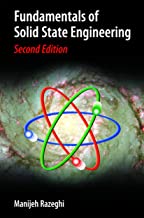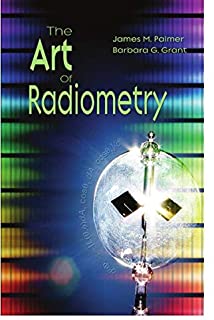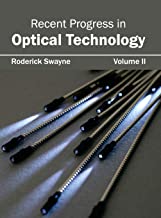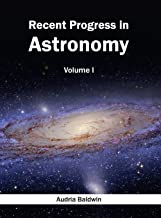Fundamentals of Solid State Engineering
Original price was: ₹6,729.38.₹5,383.50Current price is: ₹5,383.50.
ISBN: 9780387281520
Author/Editor: Manijeh Razeghi
Publisher: Springer
Year: 2006
1 in stock (can be backordered)
Description
provides a multi-disciplinary introduction to Solid State Engineering, combining concepts from physics, chemistry, electrical engineering, materials science and mechanical engineering. Basic physics concepts are introduced, followed by a thorough treatment of the technology for solid state engineering. Topics include compound semiconductor bulk and epitaxial thin films growth techniques, current semiconductor device processing and nano-fabrication technologies. Examples of semiconductor devices and a description of their theory of operation are then discussed, including transistors, semiconductor lasers and photodetectors.
Revised throughout, this second edition includes new chapters on the reciprocal lattice, optical properties of semiconductors, semiconductor heterostructures, semiconductor characterization techniques, and an introduction to lasers. Additions and improvements have been made to the material on photodetectors and quantum mechanics as well as to the problem sections.
Product Properties
| Year of Publication | 2006 |
|---|---|
| Table of Contents | Crystalline Properties of Solids.- Introduction.- Crystal lattices and the seven crystal systems .- The unit cell concept.- Bravais lattices .- Point groups.- Space groups.- Directions and planes in crystals: Miller indices.- Real crystal structures.- Summary.- Further reading.- Problems.- The Reciprocal Lattice.- Introduction.- Diffraction by a crystal.- Structure factor.- Atomic form factor.- First Brillouin zone.- Summary.- References.- Further reading.- Problems.- Electronic Structure of Atoms.- Introduction.- Spectroscopic emission lines and atomic structure of hydrogen.- Atomic orbitals.- Structures of atoms with many electrons.- Bonds in solids.- Introduction to energy bands.- Summary.- Further reading.- Problems.- Introduction to Quantum Mechanics.- The quantum concepts.- Elements of quantum mechanics.- Simple quantum mechanical systems.- Summary.- Further reading.- Problems.- Electrons and Energy Band Structures in Crystals.- Introduction.- Electrons in a crystal.- Band structures in real semiconductors.- Band structures in metals.- Summary.- References.- Further reading.- Problems.- Phonons.- Introduction.- Interaction of atoms in crystals: origin and formalism.- One-dimensional monoatomic harmonic crystal.- Sound velocity.- One-dimensional diatomic harmonic crystal.- Phonons.- Summary.- Further reading.- Problems.- Thermal Properties of Crystals.- Introduction.- Phonon density of states (Debye model).- Heat capacity.- Thermal expansion.- Summary.- References.- Further reading.- Problems.- Equilibrium Charge Carrier Statistics in Semiconductors.- Introduction.- Density of states.- Effective density of states (conduction band).- Effective density of states (valence band).- Mass action law.- Doping: intrinsic vs. extrinsic semiconductor.- Charge neutrality.- Fermi energy as a function of temperature.- Carrier concentration in a semiconductor.- Summary.- Further reading.- Problems.- Non-Equilibrium Electrical Properties of Semiconductors.- Introduction.- Electrical conductivity.- Doping.- Charge carrier diffusion.- Carrier generation and recombination mechanisms.- Summary.- Further reading.- Problems.- Semiconductor Junctions.- Introduction.- Ideal p-n junction at equilibrium.- Non-equilibrium properties of p-n junctions.- Deviations from the ideal p-n diode case.- Metal-semiconductor junctions.- Summary.- Further reading.- Problems.- Optical Properties of Semiconductors.- Introduction.- Electron-photon interaction.- The dielectric permitivity of a solid.- Excitons.- Phonon-photon interaction.- Plasmons.- Electro-optical properties.- Electrons in a magnetic field.- Nonlinear optical properties.- Optical properties of important semiconductors.- Summary.- References.- Further reading.- Problems.- Low Dimensional Quantum Structures.- Introduction.- two-dimensional structures: quantum wells.- One-dimensional structures: quantum wires.- Zero-dimensional structures: quantum dots.- Examples of low dimensional structures.- Optical properties of 3D, 2D, 1D and 0D structures.- Summary.- References.- Further reading.- Problems.- Semiconductor Heterostructures.- Introduction.- Energy band offsets.- Type I alignment.- Type II alignments.- Summary.- References.- Further reading.- Problems.- Compound Semiconductors and Crystal Growth Techniques.- Introduction.- III-V semiconductor alloys.- Bulk single crystal growth techniques.- Epitaxial growth techniques.- Summary.- References.- Further reading.- Problems.- Silicon and Compound Semiconductor Device Technology.- Introduction.- Oxidation in Silicon.- Diffusion of dopants.- Ion implantation of dopants.- Characterization of diffused and implanted layers.- Summary.- References.- Further reading.- Problems.- Semiconductor Characterization Techniques.- Introduction.- Structural characterization.- Optical characterization.- Electrical characterization.- Summary.- References.- Further reading.- Problems.- Semiconductor Device Processing.- Introduction .- Photolithography.- Electron-beam lithography.- Etching.- Metallization.- Packaging of devices.- Summary.- References.- Further reading.- Problems.- Transistors.- Introduction.- Overview of amplification and switching.- Bipolar junction transistors.- Heterojunction bipolar transistors.- Field effect transistors.- Summary.- References.- Problems.- Lasers - General Concepts.- Introduction.- Types of lasers.- General laser theory.- Ruby laser.- Summary.- References.- Further reading.- Problems.- Semiconductor Lasers.- Introduction.- Population inversion.- Threshold condition and output power.- Homojunction Laser.- Heterojunction lasers.- Device Fabrication.- Separate confinement and quantum well lasers.- Laser packaging.- Distributed feedback lasers.- Material choices for common interband lasers.- Quantum cascade lasers.- Type II lasers.- Vertical cavity surface emitting lasers.- Low dimensional lasers.- Summary.- References .- Further reading.- Problems.- Photodetectors - General Concepts.- Introduction.- Electromagnetic radiation.- Photodetector parameters.- Thermal detectors.- Summary.- References.- Further reading.- Problems.- Photon Detectors.- Introduction.- Types of photon detectors.- P-i-n photodiodes.- Avalanche photodiodes.- Schottky barrier photodiodes.- Metal-semiconductor-metal photodiodes.- Type II superlattice photodetectors.- Quantum well intersubband photodetectors.- Photo-electromagnetic detectors.- Summary.- References.- Further reading.- Problems.- Defects in Semiconductor Crystals.- Introduction.- Point defects.- Impurities.- Vacancies and substitutions.- Strain and stress.- Dislocations.- Stacking faults.- Summary.- References.- Further reading.- Problems.- Appendix.- The Kane model.- The Pseudopotential method.- Monte Carlo Methods |
| Author | Manijeh Razeghi |
| ISBN/ISSN | 9780387281520 |
| Binding | Hardback |
| Edition | 2 |
| Publisher | Springer |
You must be logged in to post a review.






Reviews
There are no reviews yet.